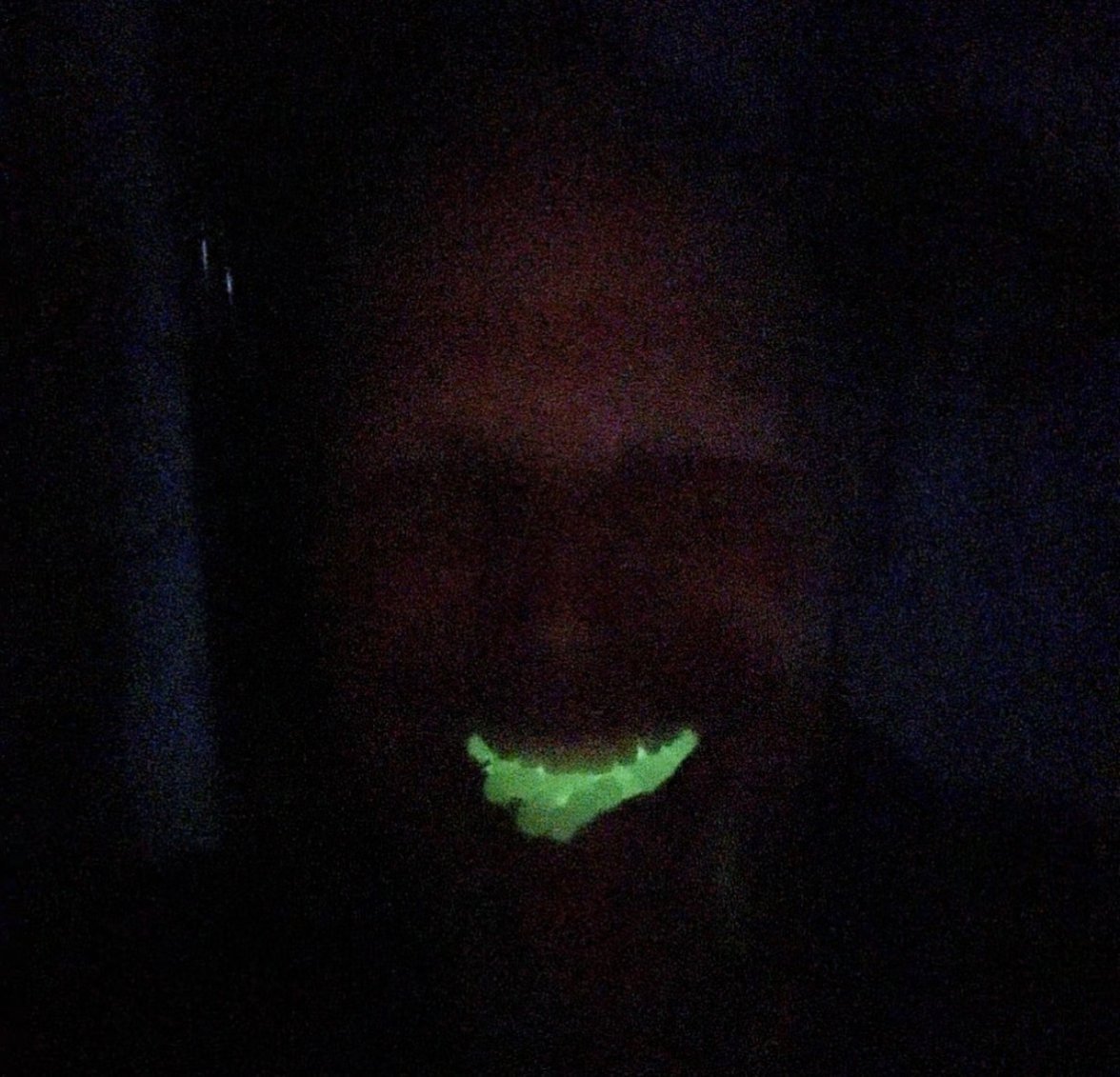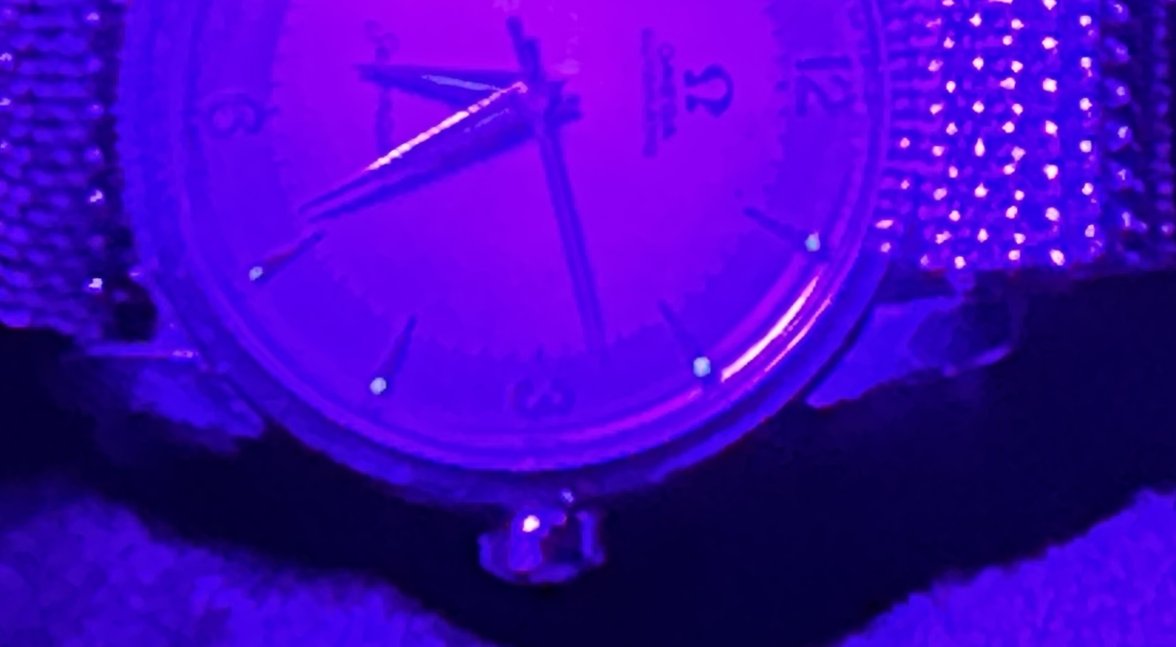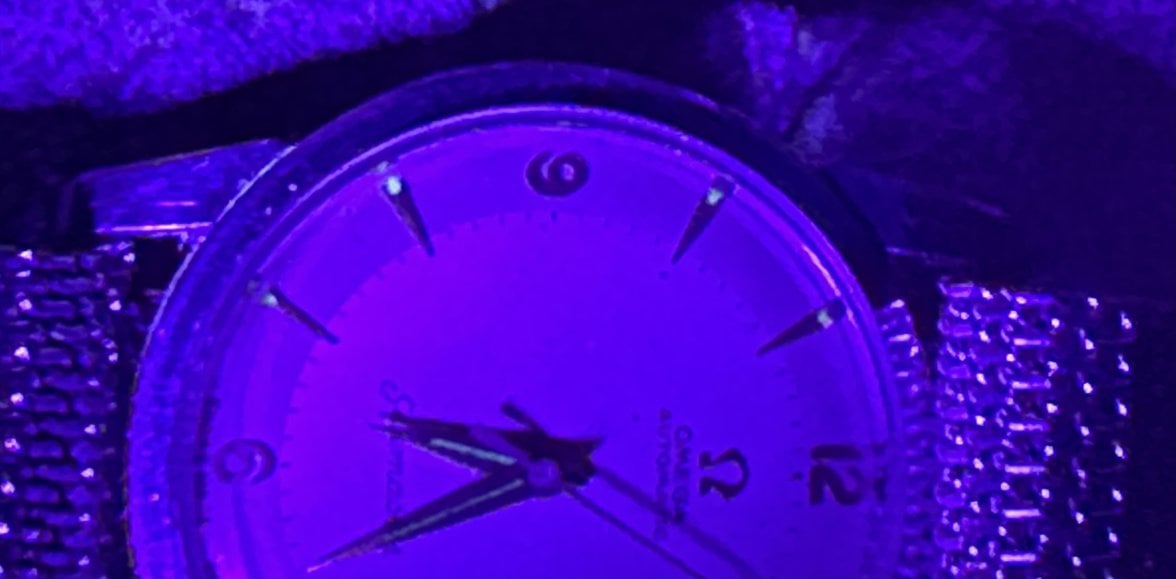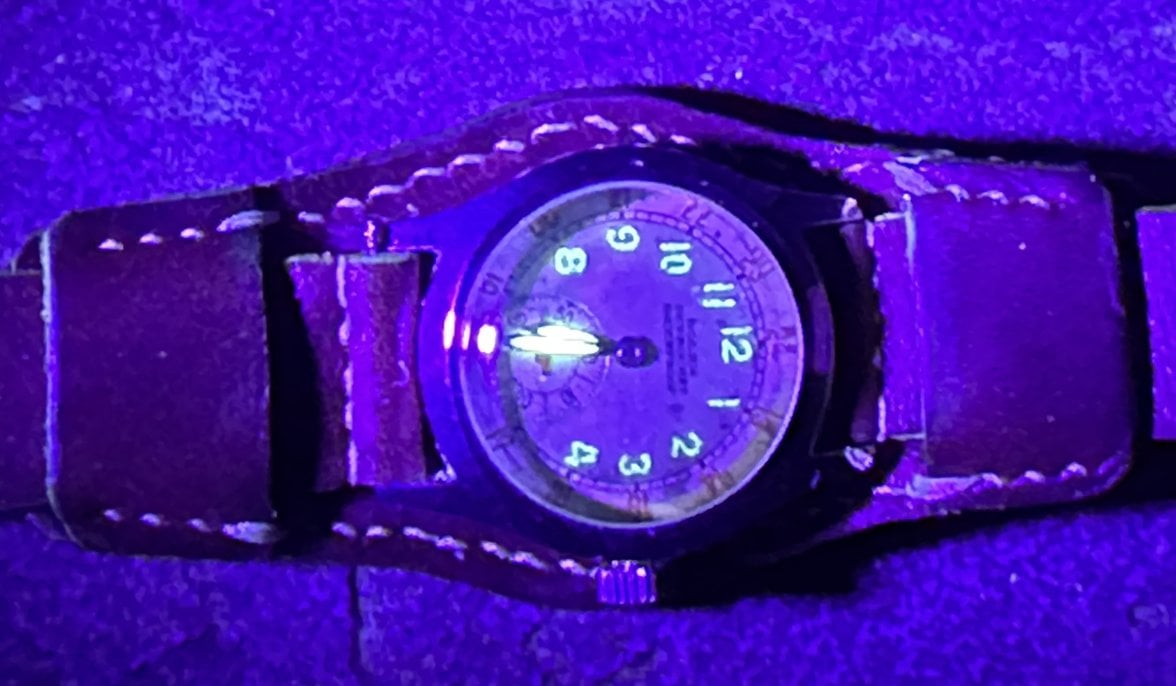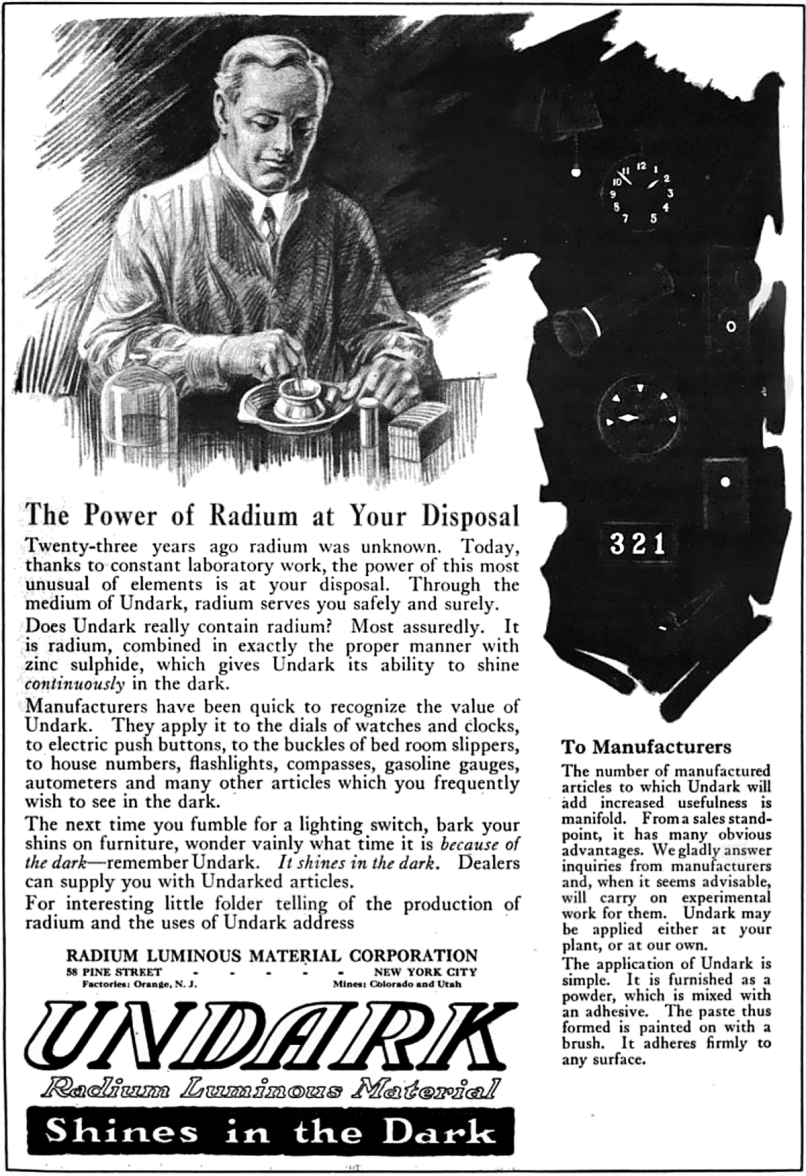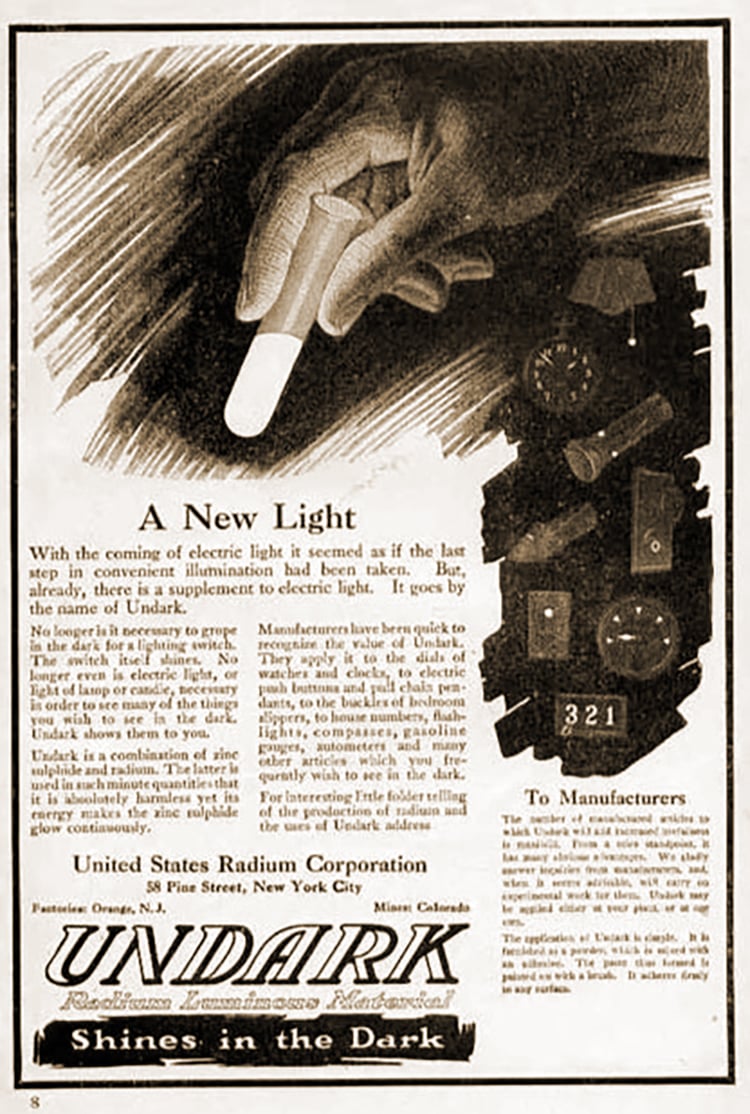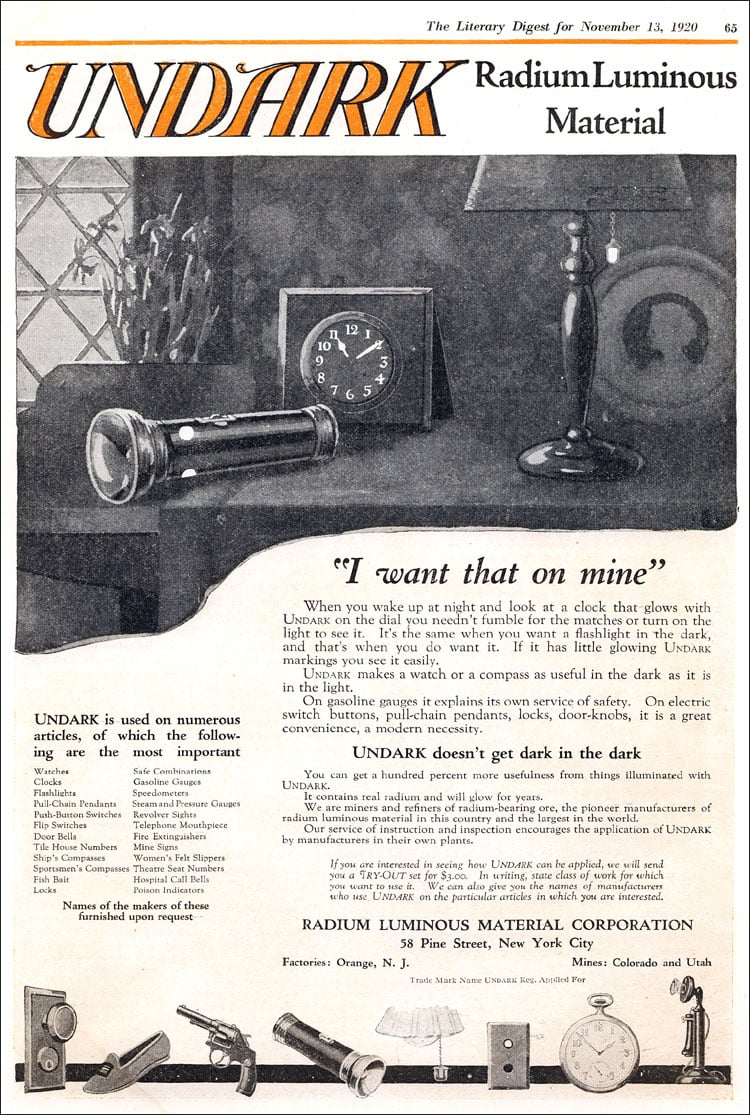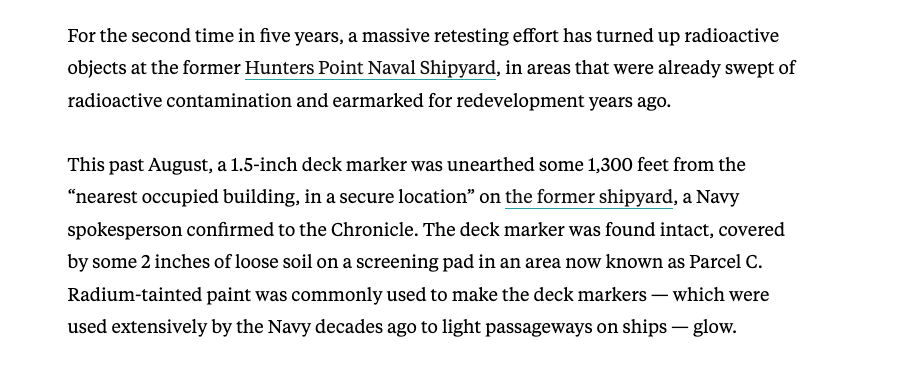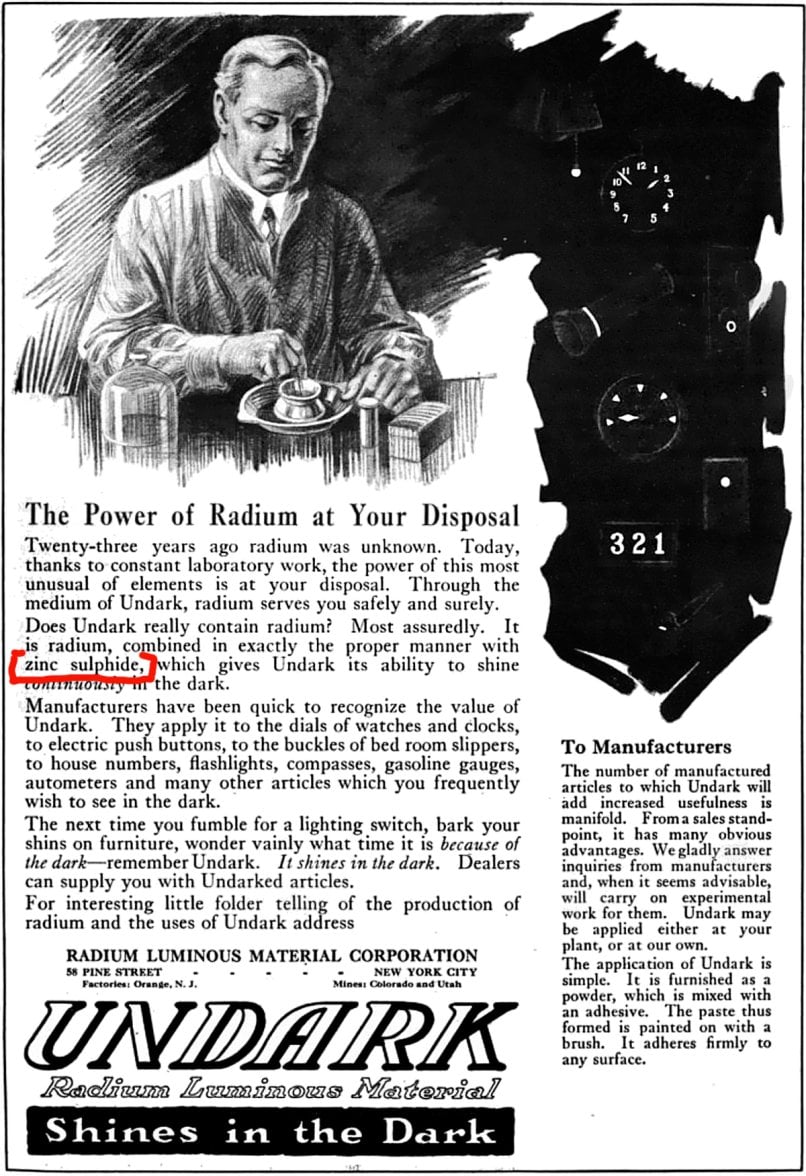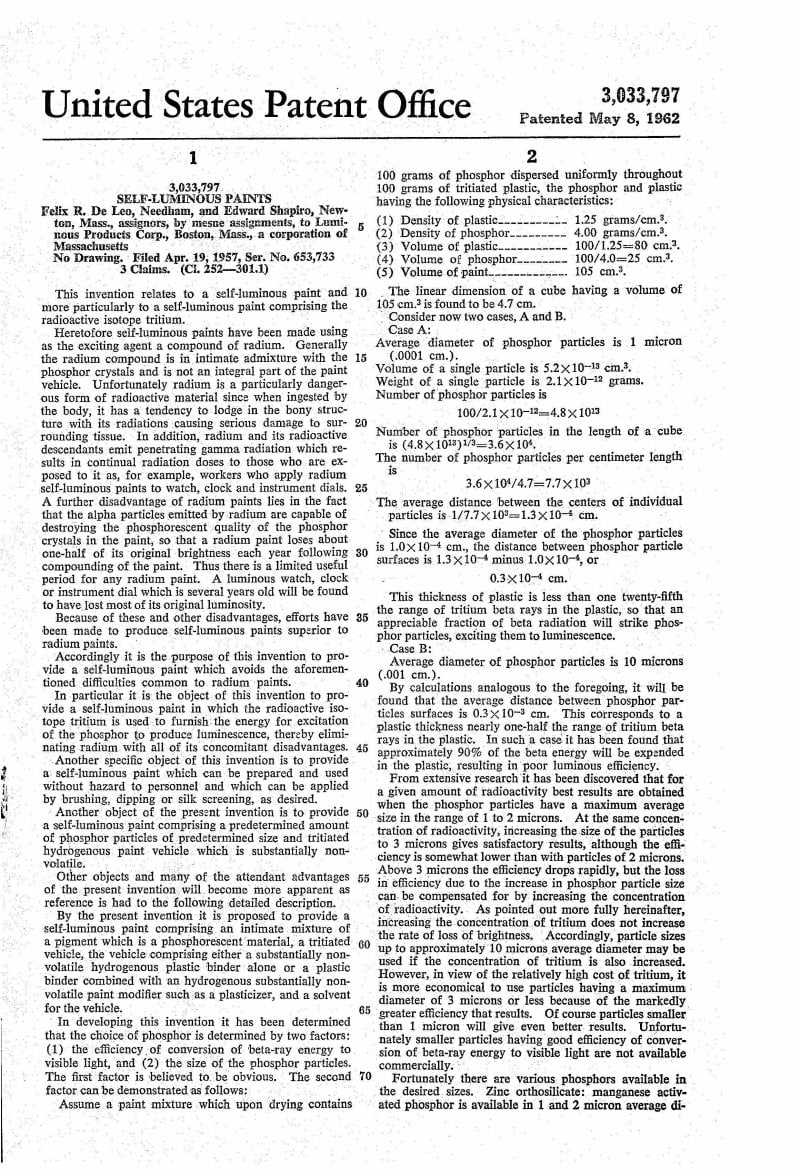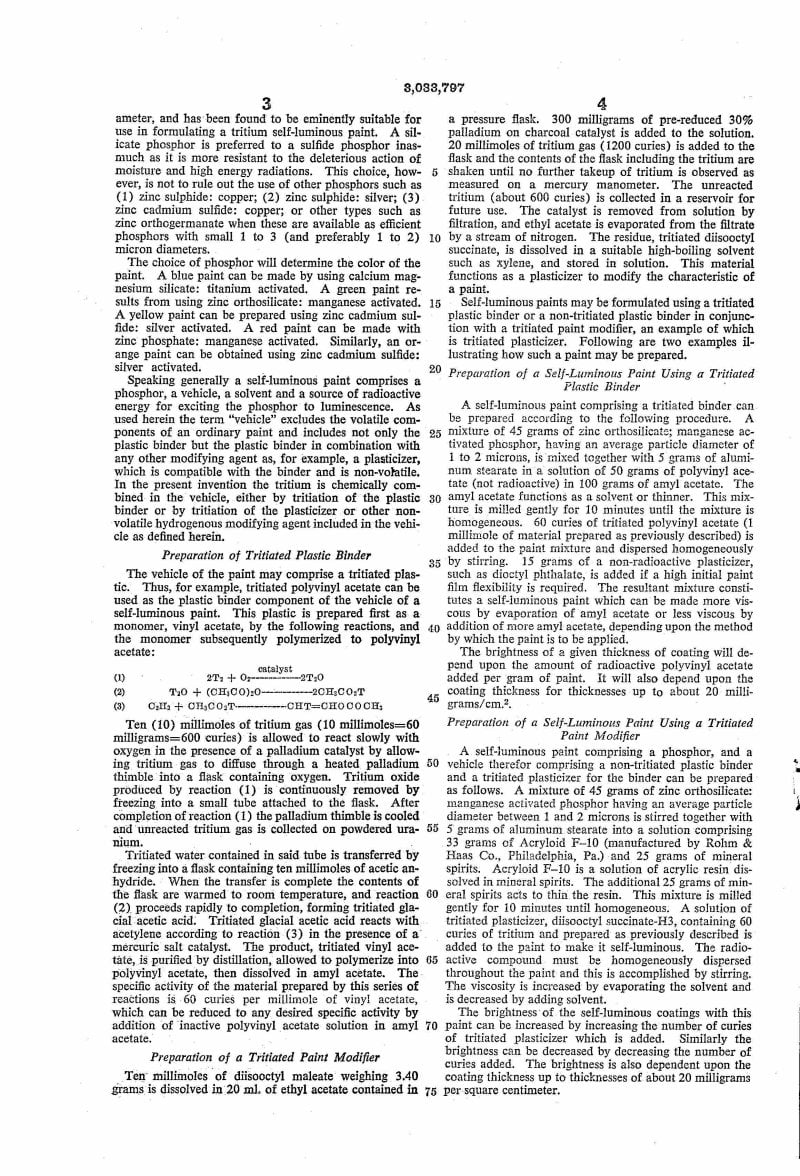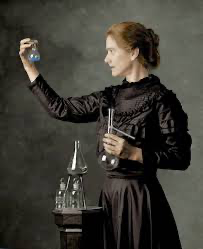gbesq
·So I thought that it would be interesting to take photos of some of my watches that have radium based lume under UV light. Here are the results. Sorry the photos aren't better, but it's both interesting and sobering when you realize how radioactive radium actually is — with a 1600 year half-life, it’s still every bit as potent (and dangerous) as it was when these watches were manufactured. Compare that to tritium which is far less radioactive and has a half life of only 12 years. Although the phosphorescent material in the lume on these watches has long since degraded, the radium component is producing as much energy as when the watches were new.
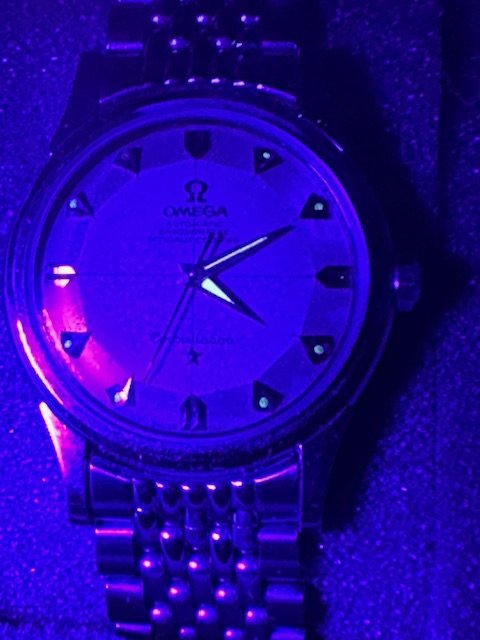
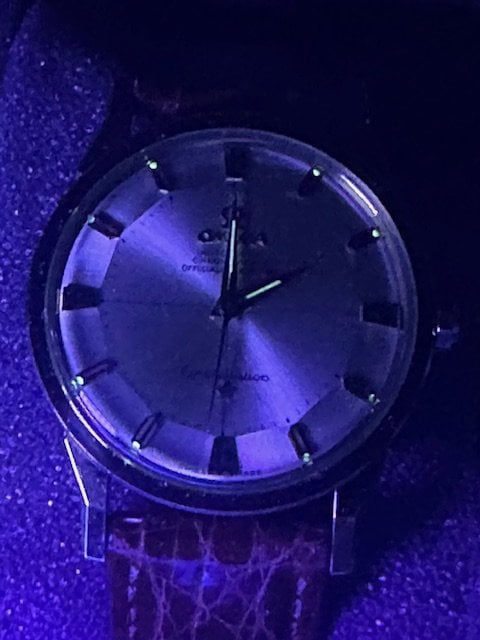
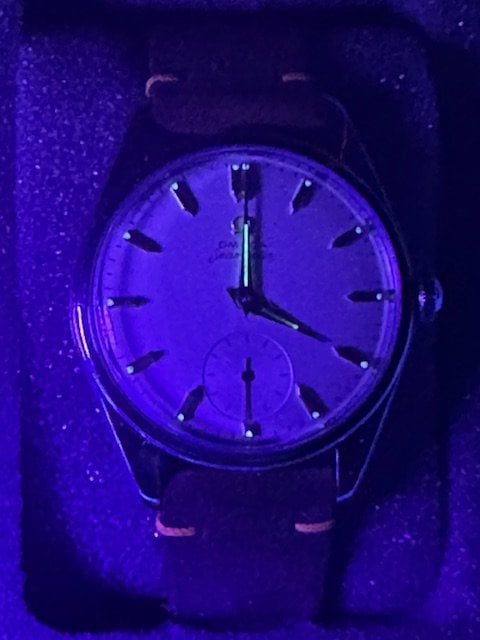
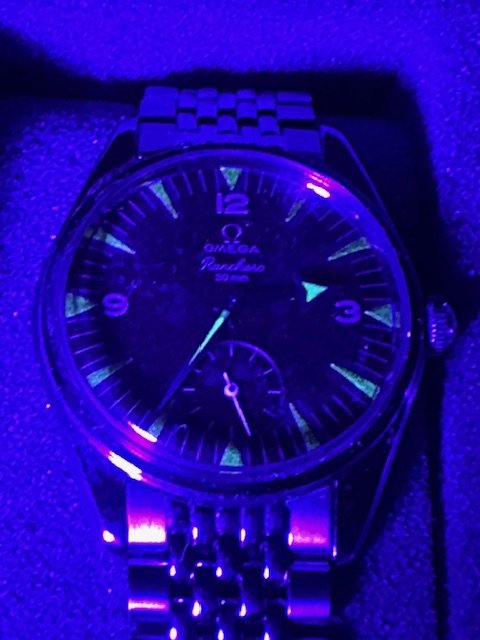




Edited:
